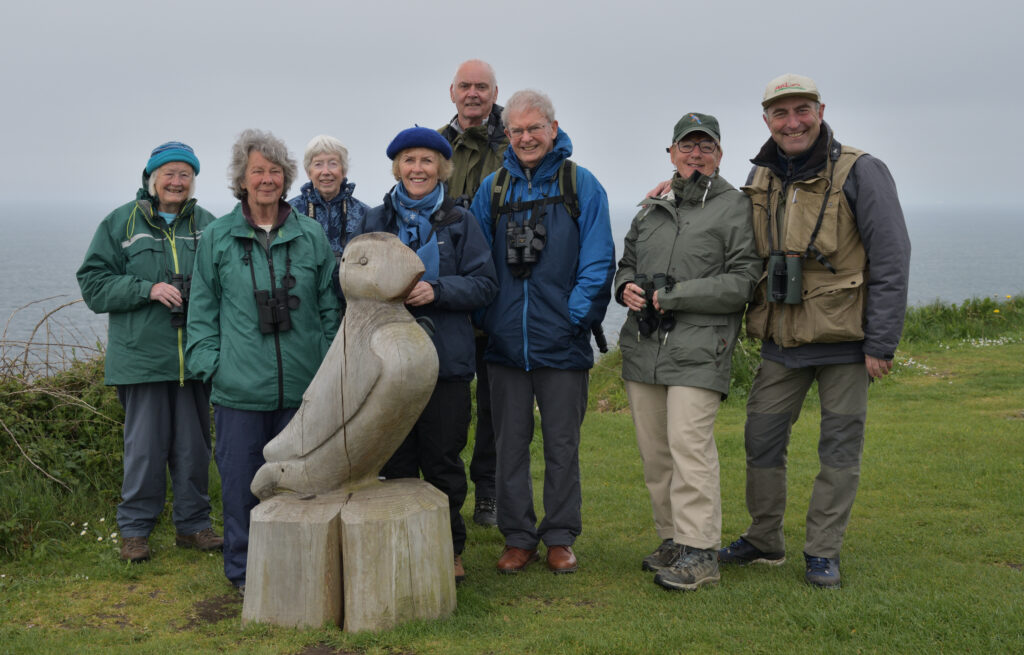
On our way to Anglesey, we begin with a visit to Gronant Dunes, where early birds include Whitethroat and Willow Warbler on a wire in the same scope view, quickly followed by a male Stonechat and a pair of Wheatears, while the surrounding dunes are alive with Swallows and singing Skylarks. Along the shore we find numerous Ringed Plover and Dunlin, plus a few Turnstones, but the star of the show here is the colony of smart chattering Little Terns. In the distance we scope hundreds of Sandwich Terns taking to the air as the tide recedes and also spot a few plunge diving Gannets.
After breakfast at the excellent Nant Yr Odyn Hotel, we head west to Holyhead Harbour where we soon spot a Common Sandpiper foraging along the weedy shore as well as our target Black Guillemots swimming below the harbour wall and flying into holes in the wall, while one pair has even occupied a nest box fixed high on the wall! Next, we visit the nearby South Stack RSPB reserve where in spring, the cliffs are covered by thousands of chocolate brown Guillemots, hundreds of black Razorbills and a few Fulmars, while small parties of Gannets float by offshore. Not far from the car park we get really close views of a pair of Choughs feeding on a garden lawn! Imagine having Chough on your garden list. Moving on we spot Linnets and more Stonechats and Wheatears and then compare a creamy-breasted Meadow Pipit with a slightly larger and much darker-breasted Rock Pipit, which then flies to a rock thus clinching its identification! The path leading down to the lighthouse is a good place to watch the Kittiwakes wheeling in and out of a cove below the lighthouse and we eventually pinpoint the one and only Puffin Billy on a rocky stack among all the other auks. By lunchtime, the sun is fully out, turning the calm sea a lovely blue colour, an ideal setting for a picnic.
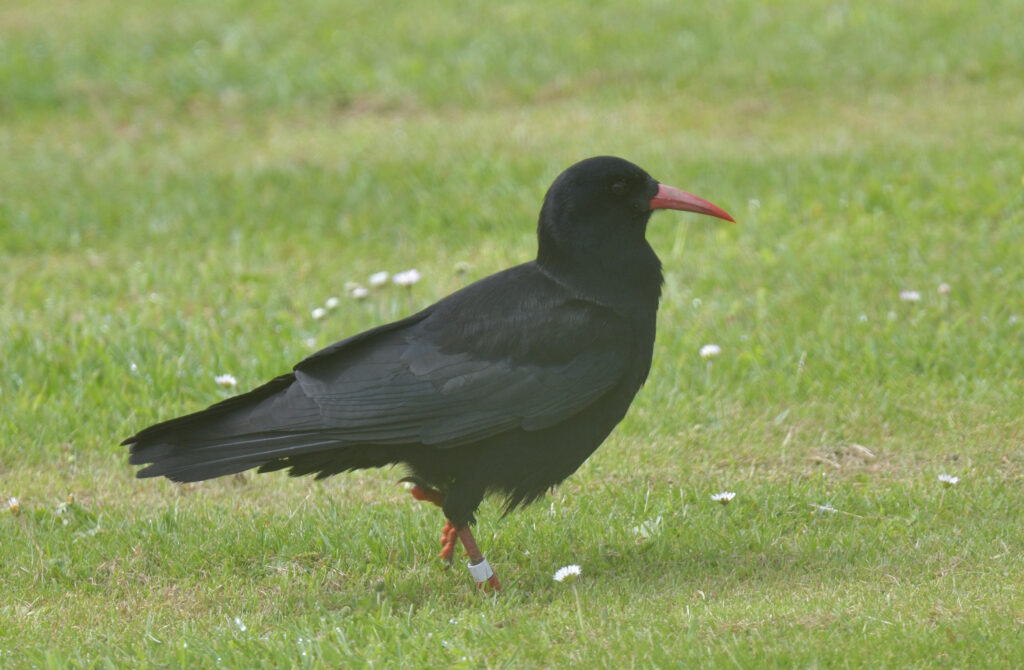
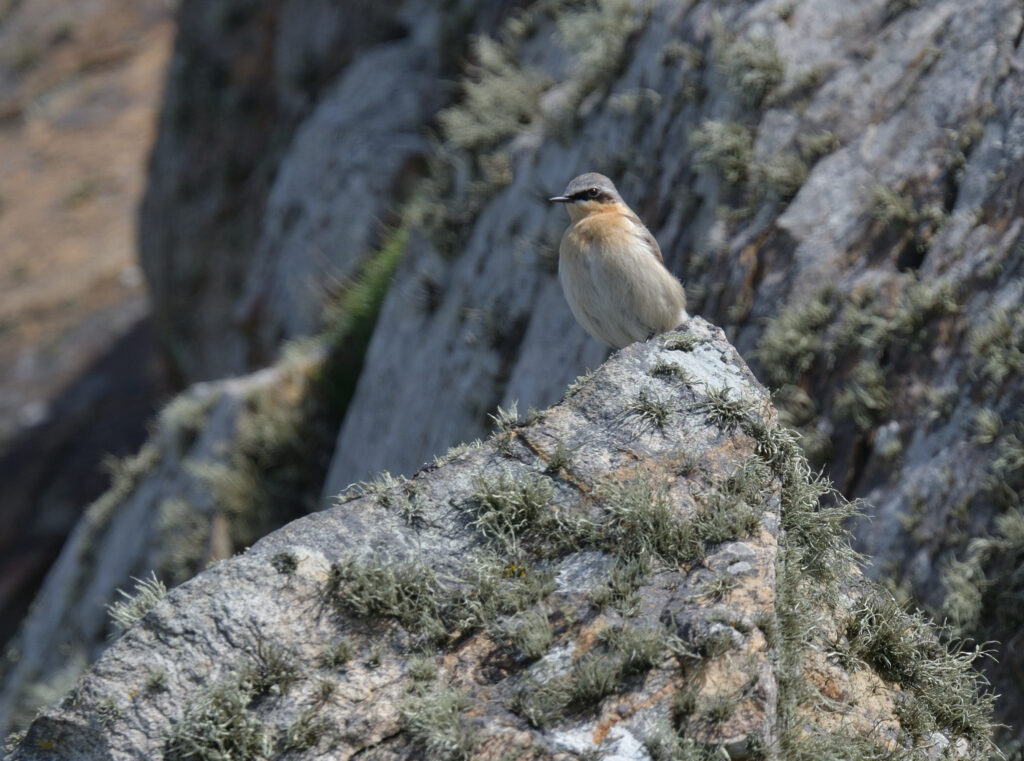
This afternoon, we visit Cemlyn Bay on the north coast where the bedlam of a frenetic tern colony produces a pair of Mediterranean Gulls and a few blood-red-billed Arctic Terns amongst crowds of noisy Common and Sandwich Terns in their hundreds, with a constant stream of partner birds delivering fresh fish from offshore. With no sign of yesterday’s Roseate Tern, we follow the coast path west in search of a recently reported American Golden Plover! In these situations, the normal practice is to find a group of birders and then find the bird, but with no one else in sight it looks like being a potential flop as the bird had presumably flown. Almost in desperation, I scan an offshore rock and there it is, sitting on the very top, along with a couple of bonus Whimbrel! Compared to ‘our’ Golden Plover, the ‘Yank’ has a darker and less yellow back. What were the chances of such a rarity showing up on the day of our visit here?
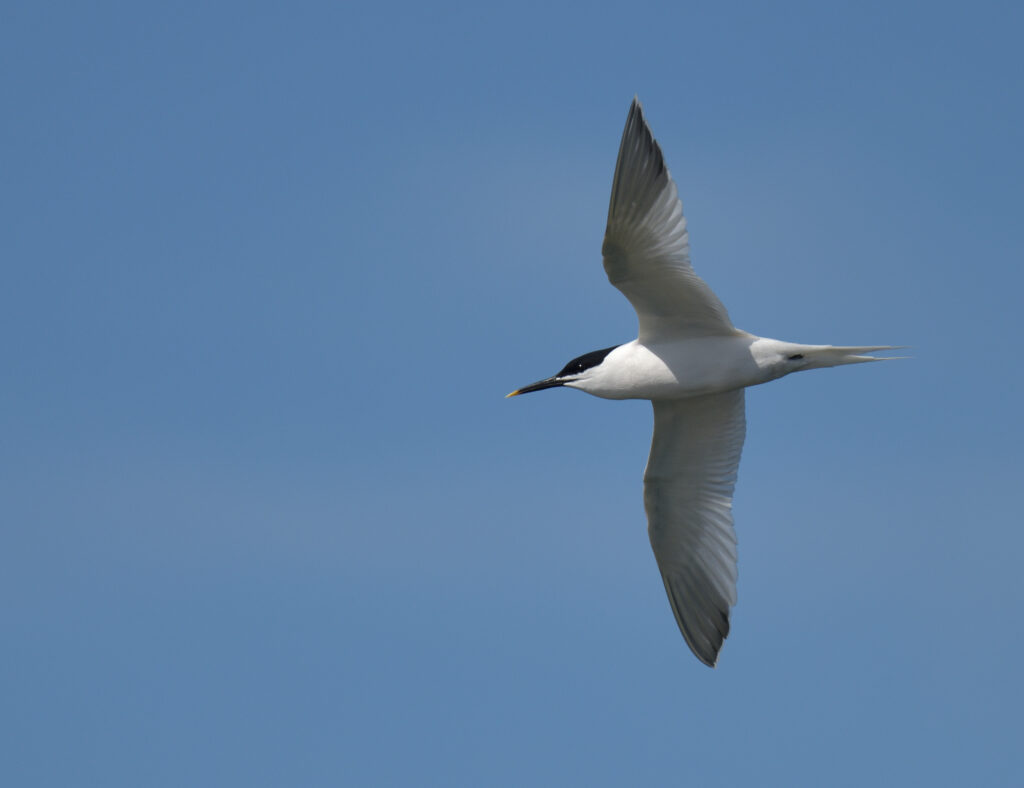
This morning we begin on the coast overlooking Malltraeth Sands where we find several Whimbrel feeding out on the mud and a couple of Black-tailed Godwits in rusty red breeding plumage on the wet grass beside Cob Pool, where we also spot a posing Linnet and a frantically singing Sedge Warbler. Moving on to the shelter of nearby Newborough Forest, we begin ‘Operation Red Squirrel’ and stake out a couple of feeders attached to pine trunks, where we soon see a male Great Spotted Woodpecker but no squirrels, so we follow the 1.5 mile Red Squirrel walk. Along the trail we get good views of singing Chiffchaff and Garden Warbler as well as Little Grebes on a pool in the woods, but still no squirrels until almost back at the car park where one scampers across the path ahead of us, so we sit down for a picnic lunch beside the feeders, hoping that a squirrel will join us. Part way through lunch a squirrel appears for its lunch and then scampers off back into the forest.
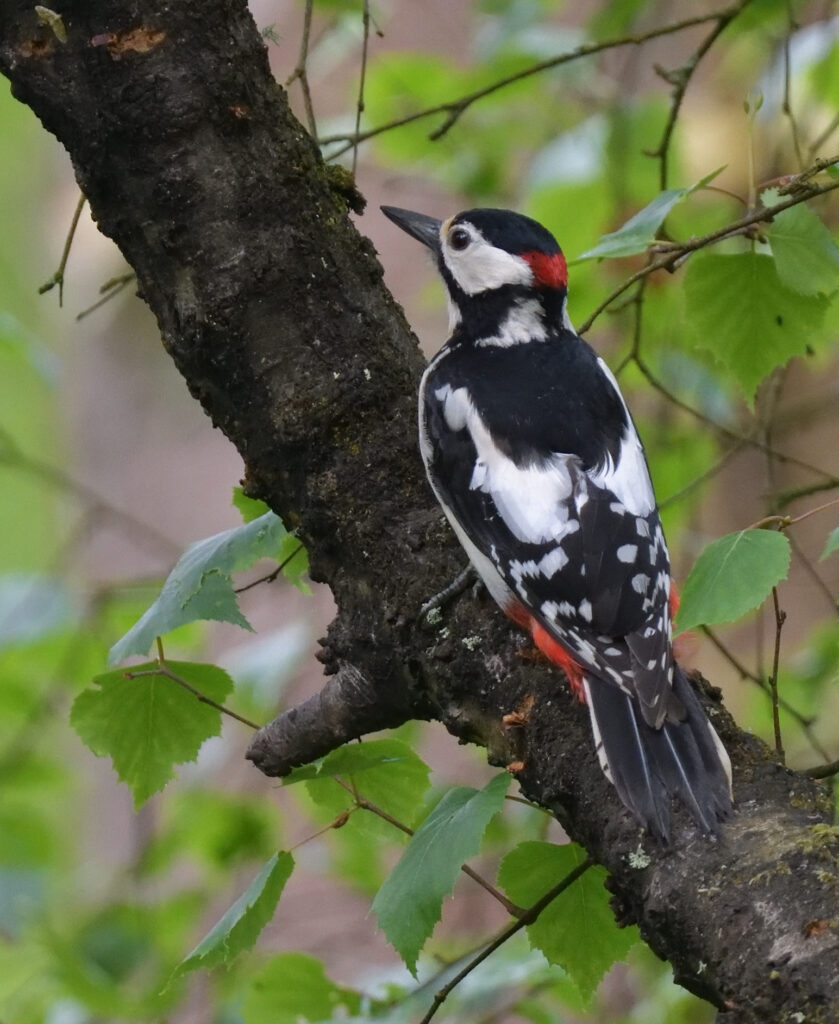
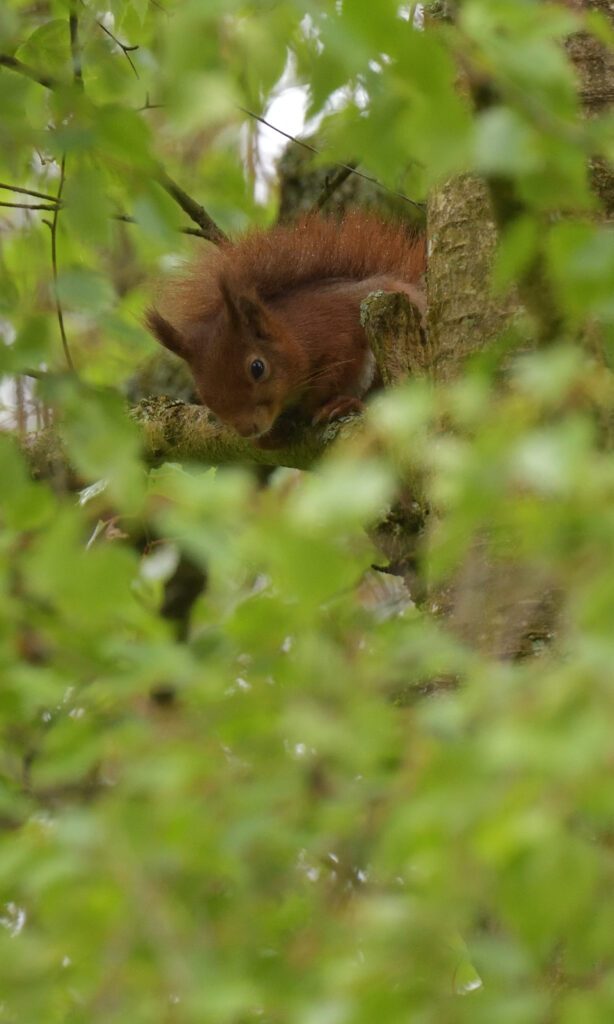
This afternoon we visit the Conwy RSPB reserve where we find another Whimbrel as well as new birds for the list like Moorhen, Redshank, Tufted Duck, Shoveler, a lingering drake Wigeon and a pair of displaying Great Crested Grebes.
It’s a sunny morning for a lovely walk to the scenic Aber Falls, spotting a Grey Wagtail below the bridge at the start of the walk, followed by a Dipper a short way upstream. Higher up we compare the songs of Blackcap and Garden Warbler and spot a Redpoll high in a nearby tree, when a calling Cuckoo suddenly shows itself with a flyover, showing its long tail, pointed wings and sharp beak. Next, we find two Jays, a pair of Bullfinches and enjoy scope views of a singing male Redstart before a picnic lunch below the high falls cascading down a sheer rock face. After lunch we get close views of another male Stonechat, but the Ring Ouzel remains aloof.
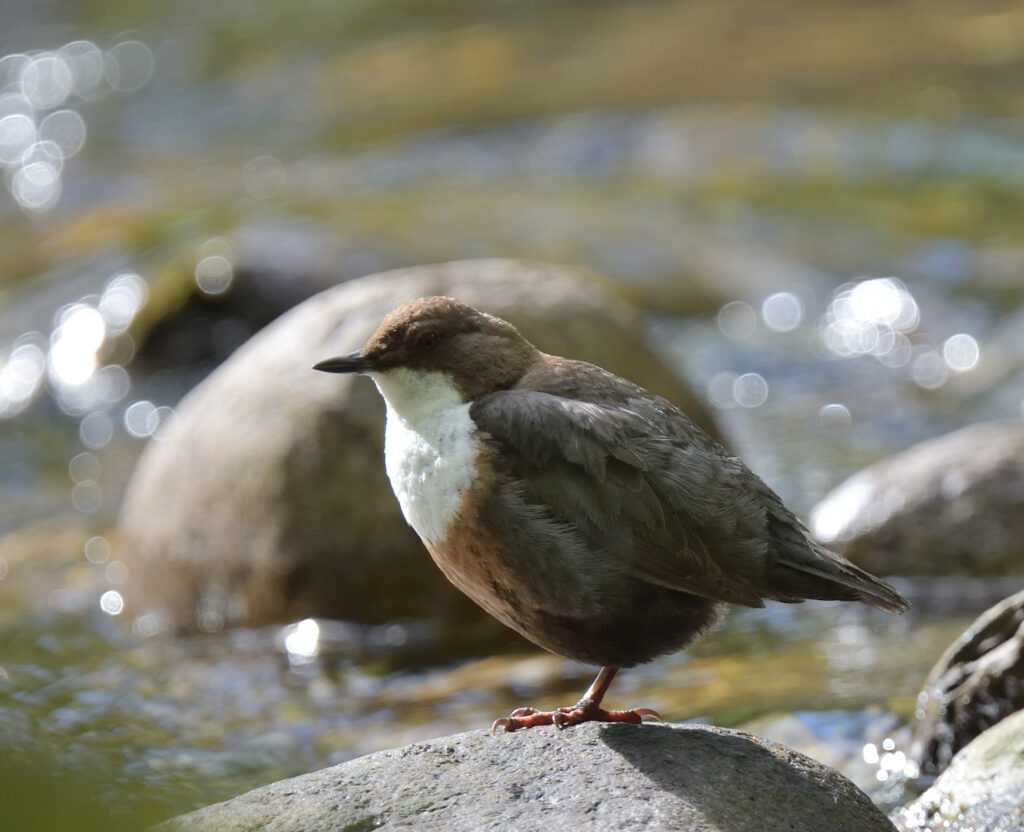
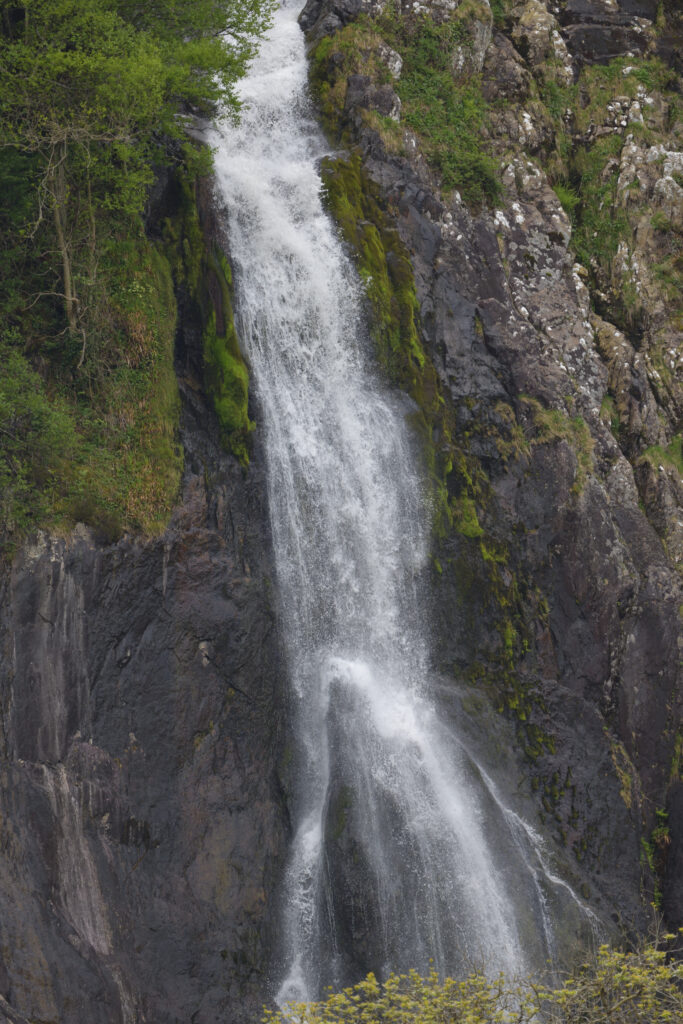
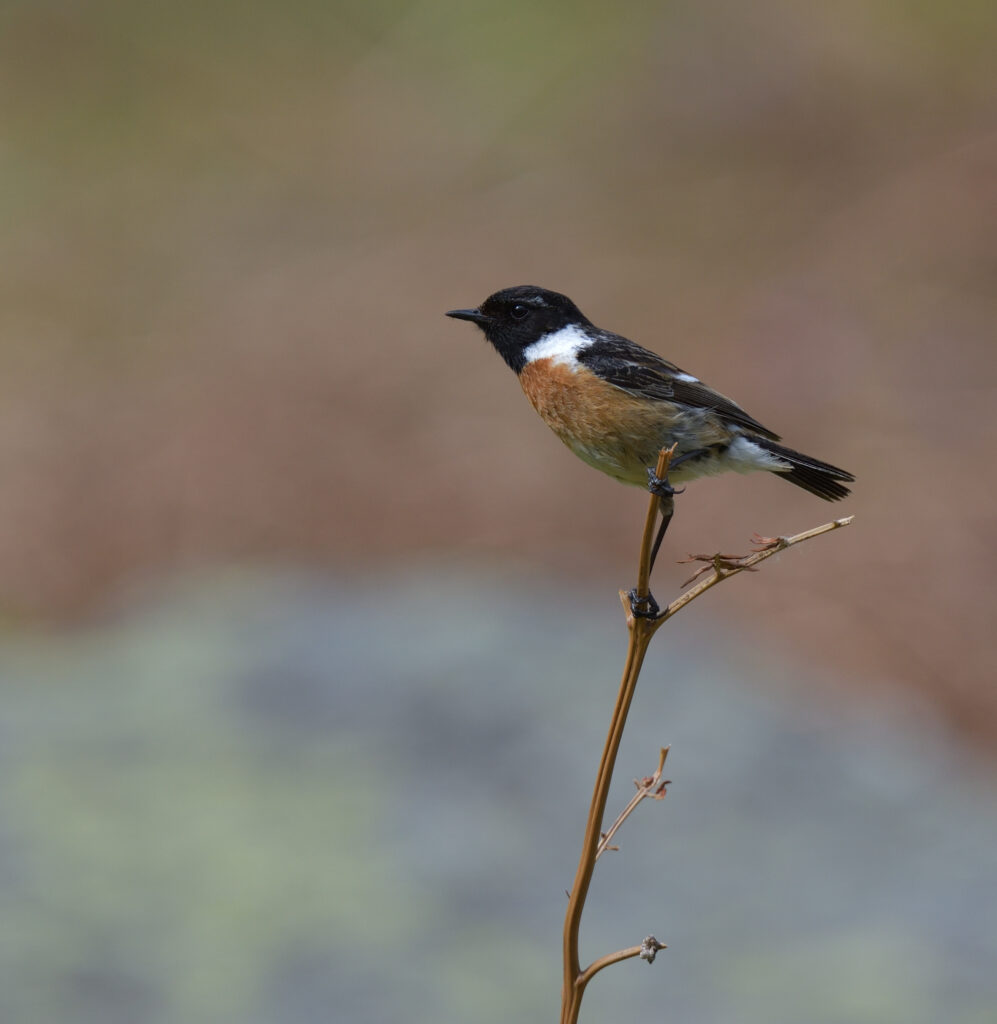
After a final night of the trip at The Wild Pheasant in Llangollen, we set out at 5.15am, hoping to find lekking Black Grouse on the nearby moorland. Driving along steep and narrow winding roads to an altitude of around 1300 feet, the vehicle thermometer says 7°C and the moorland is shrouded in low cloud, but we still manage to find a pair of Red Grouse feeding quietly beside the road. Against the odds of success, we continue slowly along the road, and as the high road almost runs out and it looks like being a fruitless early start, we suddenly hear the unmistakable cackles and hisses of Black Grouse! Amazingly, just 100 yards from the road at 11 o’clock in the mist we spot the dark shapes of several Black Grouse with fanned white tails! For over an hour we quietly watch up to 16 spectacular ‘pumped up’ male Blackcocks puffing themselves up, moving back and forth and flapping their wings as they square up to one another while cackling and hissing surprisingly close to the road. Imagine doing this at dawn every day for weeks! Feeling very pleased with ourselves, we return to the hotel for breakfast and even get close views of a bonus male Whinchat on the way back.
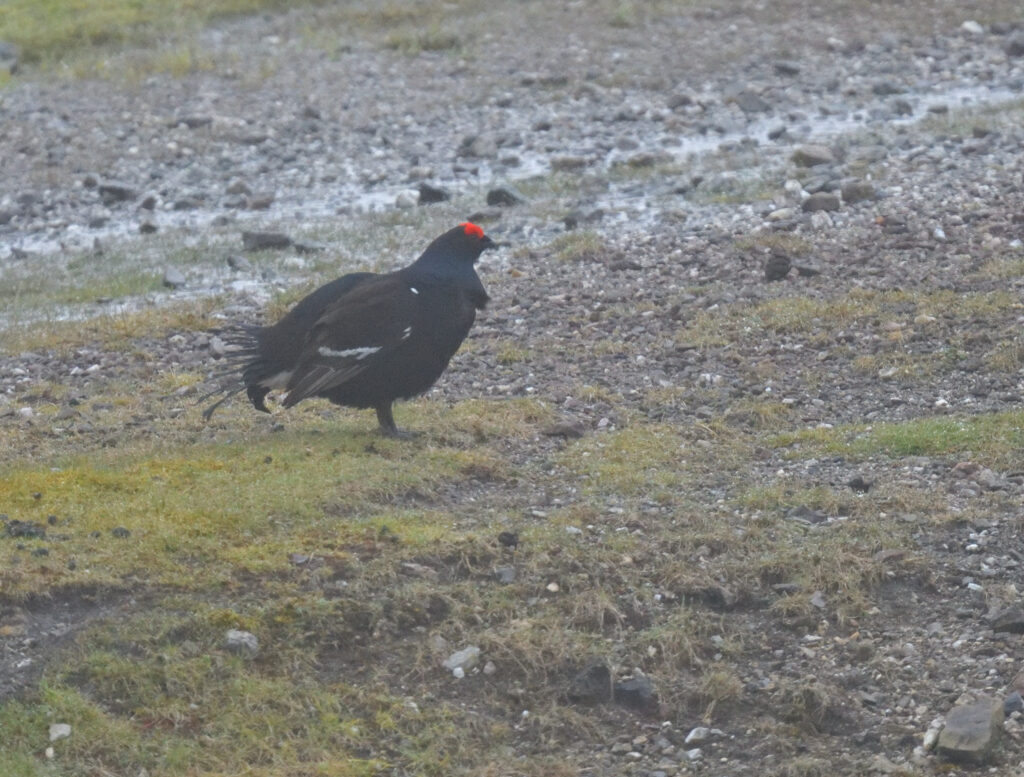
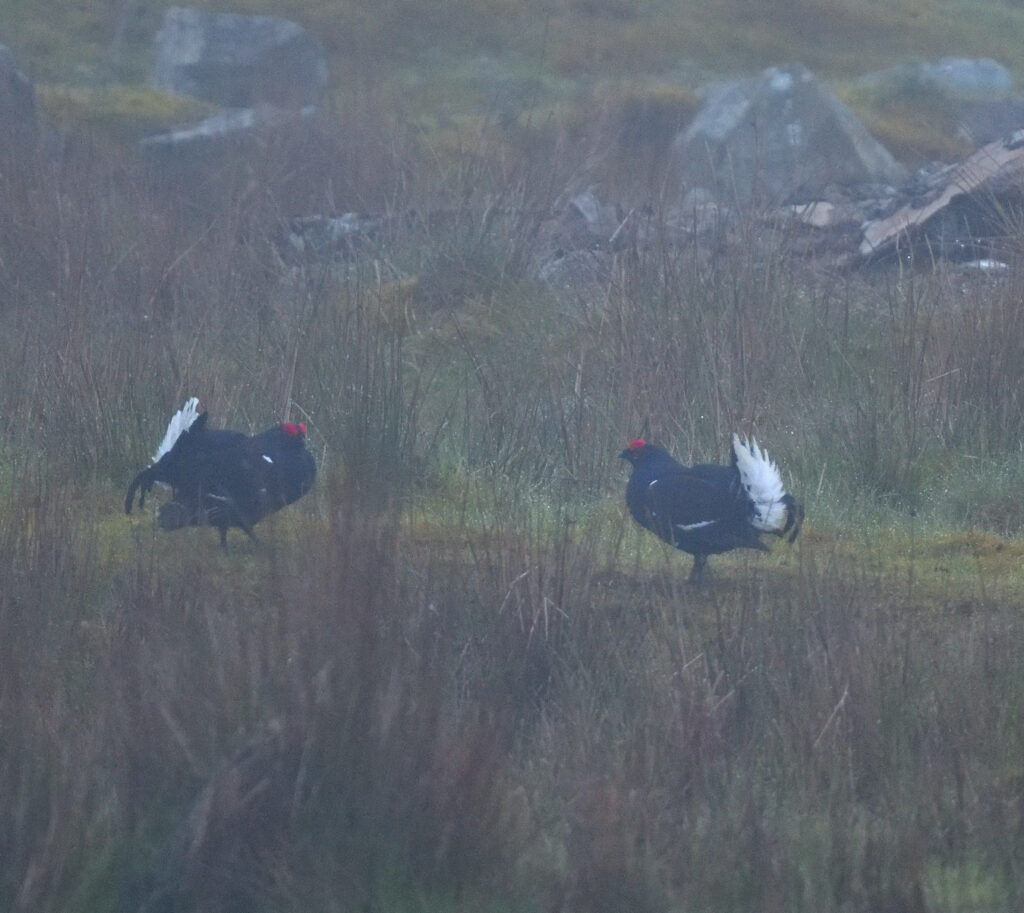
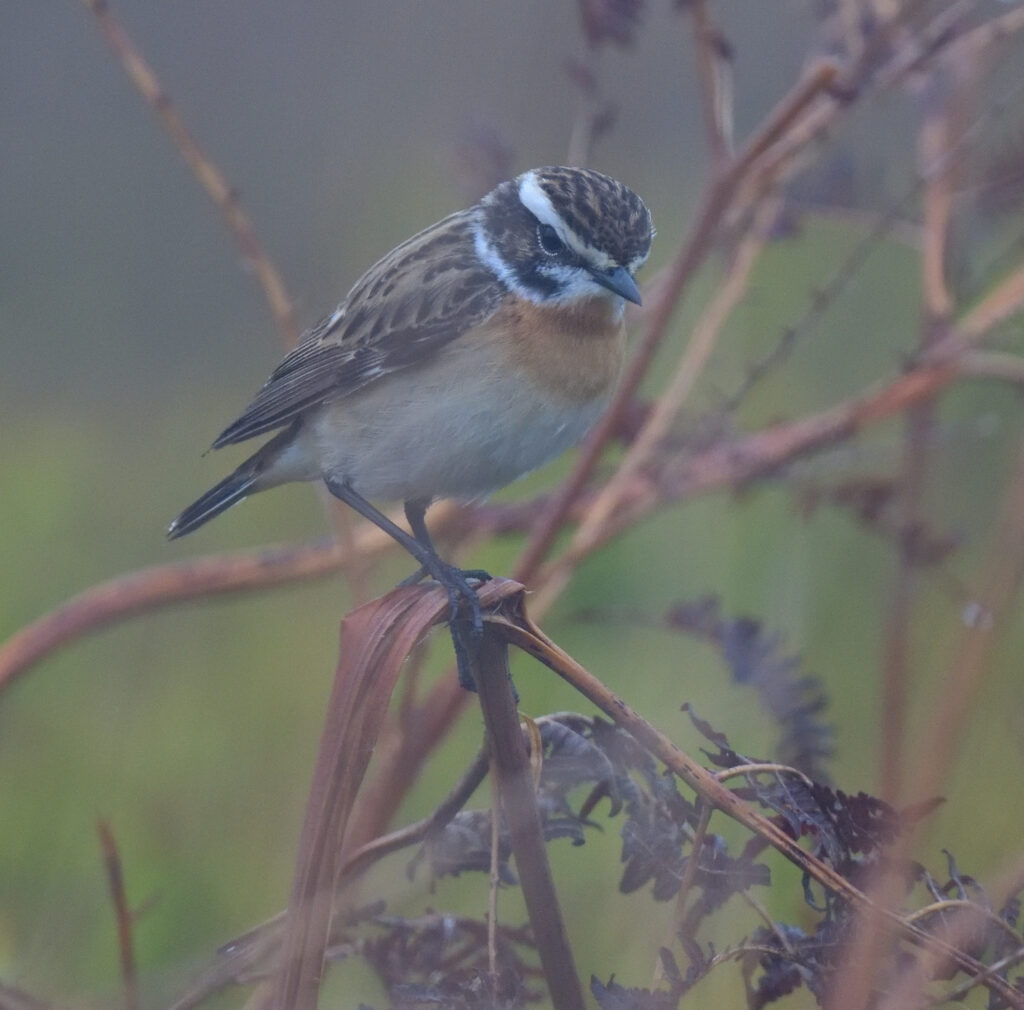
After breakfast we head south to the lovely Wyre Forest where early sightings include Long-tailed Tits and a couple of Muntjac Deer. Further along the Dowles Brook we get close views of a pair of Marsh Tits, a Grey Wagtail and a Dipper. After a picnic lunch beside the brook, a call alerts us to the presence of a Wood Warbler which eventually shows itself and then we find a singing Goldcrest. On the walk back to the vehicle, we stop dead in our tracks on hearing a Pied Flycatcher singing close to the path and eventually get amazingly close views in the scope while he obligingly sings as if glued to the branch!
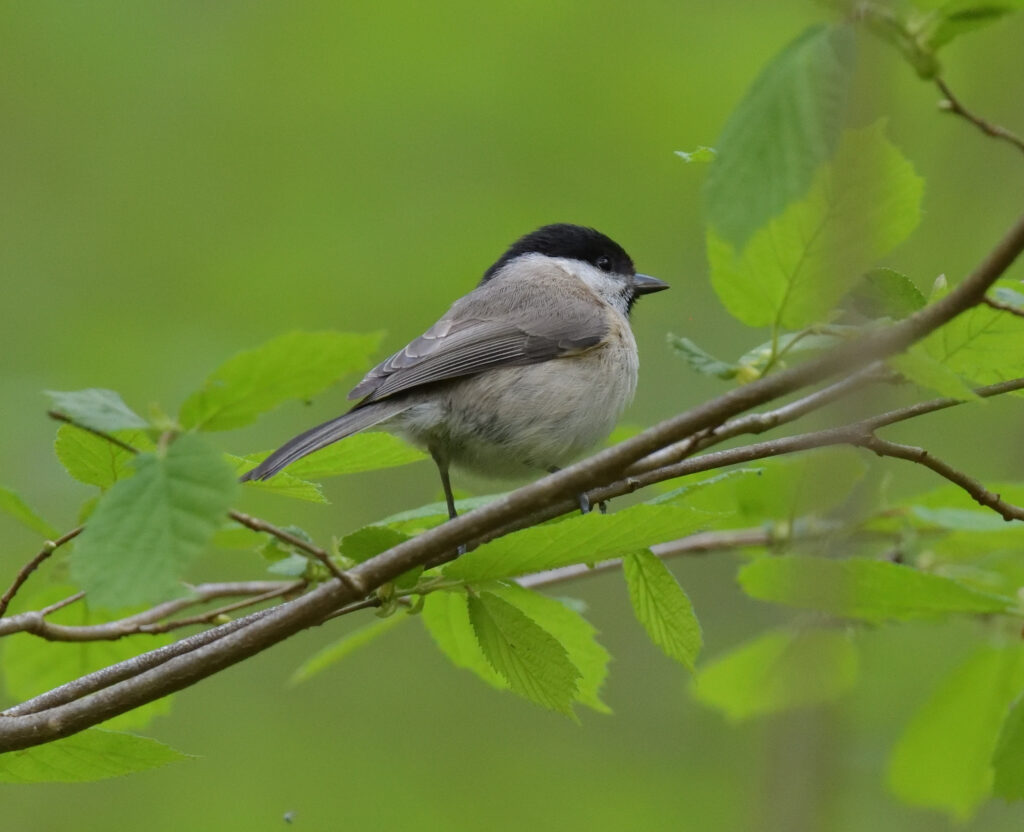
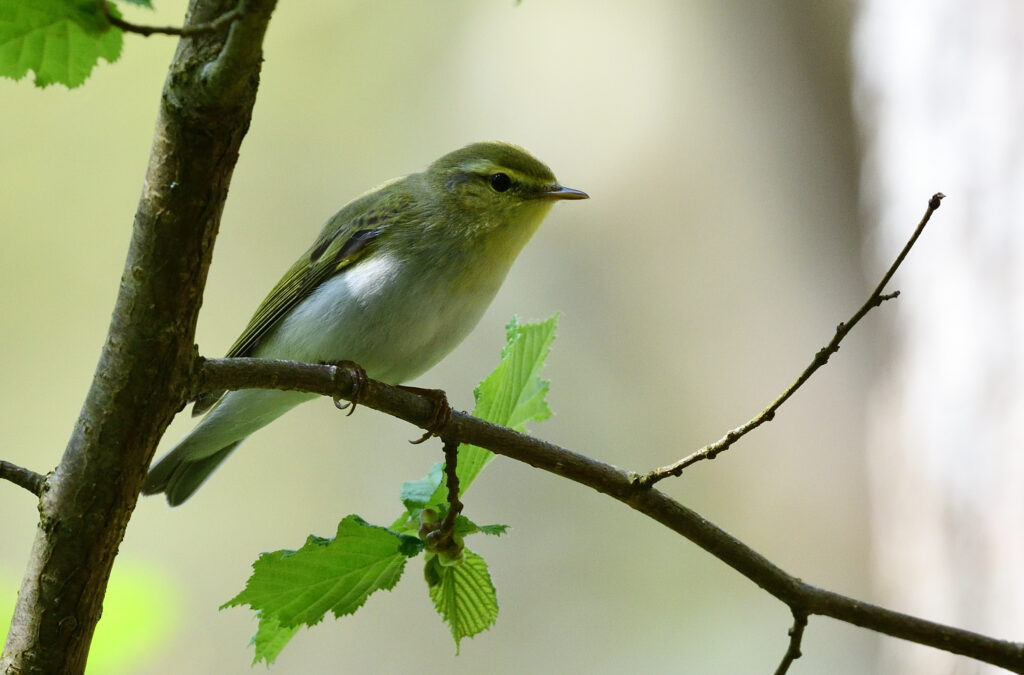
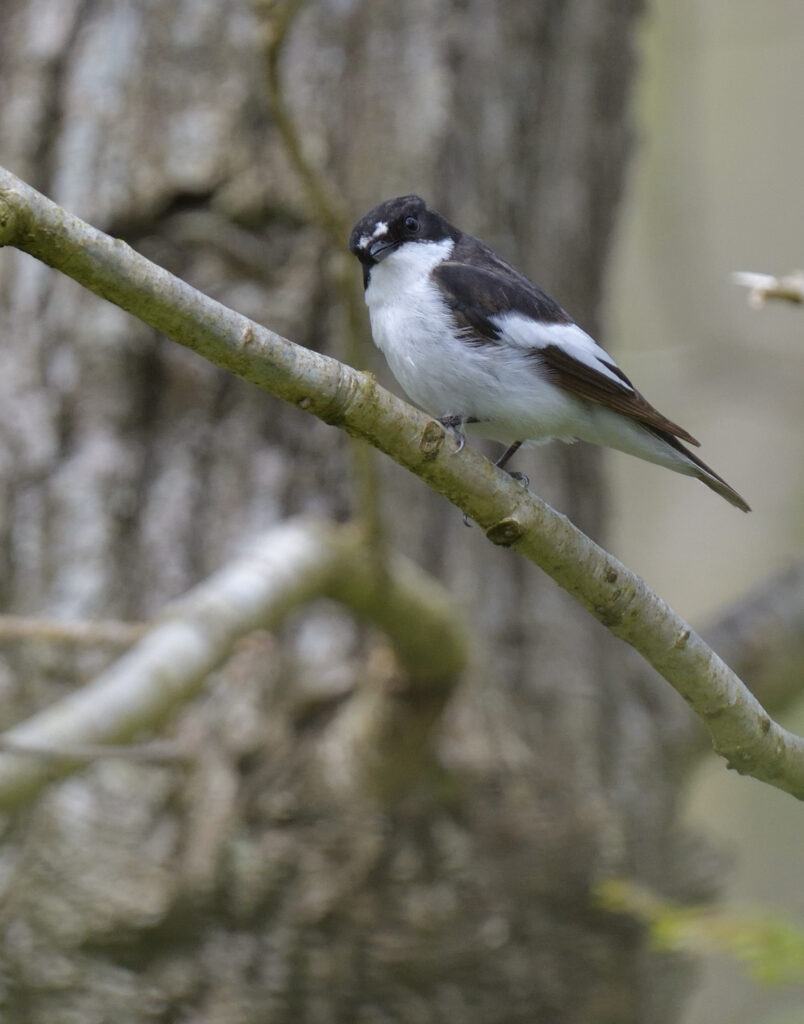
By the end of this short break, we had seen 95 different birds including stars like Red and Black Grouse, Black Guillemot, Whimbrel, Mediterranean Gull, Little and Sandwich Terns, Cuckoo, Dipper, Pied Flycatcher, Redstart, Whinchat, Wood Warbler, Marsh Tit, Chough and American Golden Plover!
